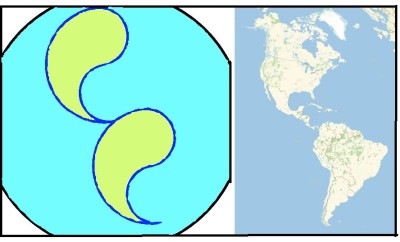
 The duality encapsulated in the concept of yin-yang is at the origin of many aspects of classical Chinese science and philosophy. Many dualities in the natural world — light and dark, fire and water, order and chaos — are regarded as physical manifestations of this duality.
The duality encapsulated in the concept of yin-yang is at the origin of many aspects of classical Chinese science and philosophy. Many dualities in the natural world — light and dark, fire and water, order and chaos — are regarded as physical manifestations of this duality.
Yin is the receptive and yang the active principle. The contrasting phenomena can be seen in numerous contexts, such as the annual seasonal cycle and the contrasts between the sexes, with yin as female and yang as male. Yin and yang may be considered to be complementary rather than conflicting forces, that interact in an ever-changing dynamical manner.
The balance between the two contrasting states is embodied in the yin-yang symbol. The names echo the Chinese terms yīn (dark side) and yáng (light side). However, the historical etymology of these terms is much more complex. This is discussed on the Wikipedia page “Yin and Yang”.
Asymmetry of the Symbol

The symbol appears to be quite asymmetric. As the above figure shows, the Yin-Yang symbol has no (non-trivial) rotational symmetries. Neither are there any reflectional symmetries, and the symbol is found in both forms shown in the figure at the head of this article. If we remove the shading, the symbol remains unchanged under a rotation of 180 degrees. However, this destruction of the contrast between the two sides completely destroys the symbolism.
The shape of the yin-yang symbol is comprised of circular and semi-circular arcs. The central S-shaped curve is made from two semi-circles with the two centres and the four end-points of the arcs all lying on a straight line. At the point where the two arcs meet, the curve is continuous with a continuous derivative; however, the second derivative does not exist at that point; in technical jargon, the S-curve is of differentiability class but not
.

A small amount of experimentation, moving components of the symbol around, enables us to produce a wide variety of patterns. See Figure above. The right-most panel of the figure resembles a map of the Western Hemisphere, with North and South America prominent.

Sources
Wikipedia article: Yin and yang.
